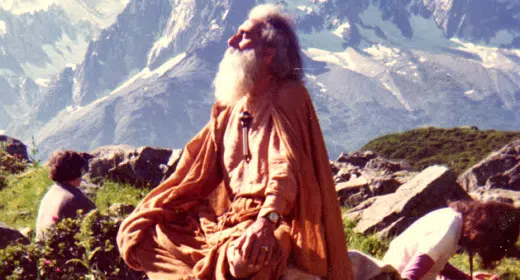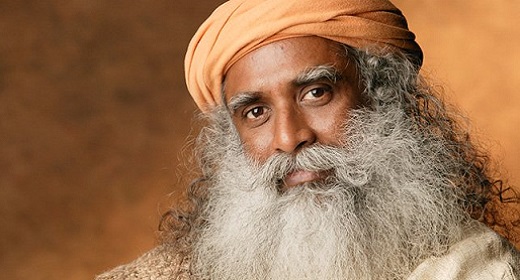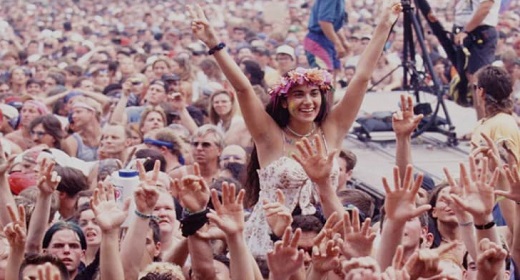by Donna Quesada: Intelligent commentary about music and culture, pivoting around the Woodstock era…
The epoch called “modernism” was driven forward by a fantasy of a perfectly ordered world… a vision of utopia… a grandiose scheme of order. It donned the crest of Truth, with a capital “T,” the very same one that formed the blue print of some master plan of the world… the “prototype structure,” based on Universal Law: that which would fix us and fix our world… that which would make everything new and improved, as if we could somehow replace our collective DNA as earthlings.
And if we could achieve this utopia, what would it look like?
Homogeneity—
It would look like uniformity. Its code and credo was form follows function. According to the utopian language of the modern movement, which dominated the first half of the 20th century, the function of anything dictated its form, which is to say, there shall be nothing extra added, beyond that which is needed. So, for example, in the case of a machine, the body would be stripped down to the basics: a motor and a casing. Little more. Nothing more, if possible. Certainly, nothing overtly decorative. Nothing fluffy. Nothing cute.
Architecture, the most visual of the art forms, would display this doctrine of simplicity through what became known as the Universal Style, arising out of the German Bauhaus school, in 1919. And buildings would all look the same. They would be homogenous.

Bauhaus Architecture. The modern style championed simplicity of ornamentation.
This function and vision of simplicity was thought to be known through human reason. Reason was the height of human capacity… the very purpose of what is means to be a human. This was an echo of Platonism, to be sure (recall the prisoners in the cave, reaching for their potential, analogized by their ascent to the top, where they finally see the sun… symbolizing the triumph of reason over senses and certainly…over emotion).

Piet Mondrian. An artistic representation of how reason & order trumps emotion.
The Dark Underbelly—
Though the mission of modernity was progress, the result was great upheaval and destruction. It’s the dark underbelly of the modern ideology; in its angst to universalize, to streamline, and to remove all un-needed parts, it would take bold action toward the unequivocal end of washing society clean of its impurities. This scrub down was reflected in all realms of society… from art to economics to the streamlining of culture, itself. Communism and the holocaust are the most dramatic examples. Both were moves toward the homogenization of culture… toward sameness, toward cohesion and especially, toward order.
It was a wholesale laundering… a disinfection. The idea was to purify all of society by removing anything extraneous and subversive.
The Upheaval Continues—
In its love of progress and order, modernity was characterized by a general shift away from anything traditional and magical. The new technological approach to nature exacerbated the domination and degradation of our environment through the cultivation of high output production forces. Machinery was the game.
The environment was just one more vague and nameless category of “other.” In the collective mind, man stood apart from nature and could use it up according to its needs.
We were ruining our existing world in our quest for the perfect world.
What is POSTmodernism?—
The 1960s were upon us. As every tide eventually turns, postmodernism would engender a backlash on such glaring pomposity, on the very assumption of what the academics called, “a grand narrative.” After all, who defines the “Truth?” What is right and what is wrong? Who gets to be the judge? And what about those whose story was conveniently unheard?
In plain language, postmodernism rebuffs the very possibility of universal truth… the very idea that there could be merely one view, one voice, or one standard. One anything. This reaction permeated the academic world, the art world and the political realm, in the form of a fragmented style. This was underscored by deconstruction techniques… which is to say, a general breakdown of the tyranny of the “universal style” and its assortment of faceless bureaucracies. It was a needed correction.
The postmodern movement was born, with its desire for plurality, a multiplicity of voices, and “inclusion.” The philosophy that underpinned the movement embraces the idea of identity through difference. Politically, this meant there was a general effort to restore racial and gender identity to those who were subverted and oppressed by the hands of modernist housecleaning.
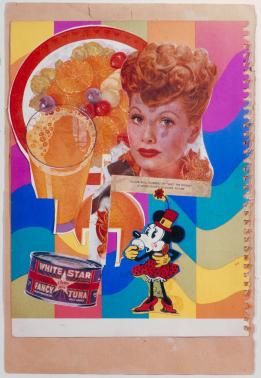
Source: http://www.tate.org.uk/art/work/T01459
Artistically, a stylistic heterogeneity was emphasized, which is to say, a potpourri of styles and elements were included. We were now seeing playful, overtly decorated facades, in architecture and an abundance of styles, all patched and fused together, in all art forms. Anything in Las Vegas is the perfect example in architecture, as is the corner strip mall, with its ironic clock towers, propped up by enormous, tongue-in-cheek, Greek columns. And the collage is the quintessence of the postmodern style, in art, as it playfully represents the melange and coexistence of many styles at once.
Postmodern Music—
This blending of styles started to show up in music, as an art form, as well. We start to see this creative and fusion of styles and even gender, emerge in the years just before and after Woodstock. Consider, for example, David Bowie and Roxy Music, both of whom shatter the old model of what popular music sounded like, by incorporating elements from different genres, and by simultaneously experimenting with their public persona in ways that would have been rejected just a decade earlier. Both not only challenged the line between “masculine” and “feminine” in their appearance, but at least in Bowie’s case, the line between species; case in point, the extraterrestrial, Ziggy Stardust, and Diamond Dogs, in which he takes the form of a man with dog-like features.
More on Deconstruction—
Deconstruction Deviance was also part of the postmodern agenda.
Serving as the bedrock of postmodern concerns, deconstruction questions our ingrained tendency to look at the world through the framework of a hierarchy, in which all categories of reality are divided in two, such as in the division between white and black; man and woman; and man and nature; reason and emotion. These false divisions prioritize one part of the equation, while leaving the other to the status of “supplement.” In these few examples, it is easy to see how this false division led to widespread oppression and violence toward the subordinate half. Deconstruction uncovers this offense.
Through deconstruction, the postmodernists hoped to restore justice to the subverted half.
Their motto was: Let all the voices be heard!
And their general MO was to refrain from judgment… because judgment assumes a judge. (And who gets to be the judge?). Altogether, postmodernism served as the natural correction to the multitude of modernist prejudices.
Spotlight on Woodstock—
Arriving at the tail end of Modernity, the Woodstock festival would inevitably carry strands of Modernist ideals, such as the wish for utopia, as discussed above. But, as if predestined to herald in POSTmodernity, in its welcome embrace of all things different… it was a hodgepodge of art forms, people, music, cultures, and in sum, a toast to the multifarious voices… all insisting on being heard. It was a peaceful and colorful demonstration of deviance. All in the name of diversity.
Woodstock was originally titled An Aquarian Exposition: Three Days of Peace and Music. Although it wasn’t the first open air music festival of its kind (that distinction would go to The Monterey Pop Festival, of 1967), the idea behind Woodstock, was, from the get-go, to present the counter-cultural philosophy, driven by the growing anti-war sentiment. And this was to be done through the medium of music. In a notably different spirit, The Monterey Pop Festival was created with the intention of validating rock music in a location known for its long running Jazz festival. Each had its own agenda and intention. And that is what makes the difference.
Postmodern philosophy provided the seeds of thought that inspired the counter-cultural movement, of which Woodstock was the crowning glory. And even the modern dream of utopia was carried out in the postmodern way… through deviance and through the celebration of difference.
Therefore, I suggest Woodstock as the first major postmodern event.

Warhol’s Brillo Boxes
How is it Art?—
What makes Warhol’s Brillo Boxes different than the boxes in the supermarket? The answer is: Theory. The intention behind them, as an exhibit. The boxes positioned together, in this way… presented for the sole purpose of being gazed at… as a presentation, as a grand declaration, as a statement, separates them from their abrasive counterparts.
Similarly, The Woodstock Music and Art Fair wasn’t just a multi-name concert. It was an expression of widespread dissatisfaction. Like the Warhol Brillo boxes, it was a statement. It was social activism. In a way that had never been seen before. It was a critique of the status quo. Although the impetus was Vietnam, it was a call for the wholesale readjustment of all social and political elements that were seen as oppressive.
It was postmodern in that it presented an example of the “other” voices being heard, or rather, 500,000 voices… many of whom were attracted to the event, not solely for the show, but to be a part of what was essentially an anti-establishment agenda. The mostly young, left-ish, white, middle class group, craved freedom of expression and wanted to be a part of something that would provide a sense of freedom from traditional cultural norms. Their non-conformist stance was reflected though their appearance, adopting a new clothing style and hairdos that expressed their liberated mindset… handmade and natural, being key. And colorful.
The unorthodox outlook would extend to all aspects of lifestyle, leading to an increase in communal living settlements, an openness toward sexual exploration, and drug use. They became known as hippies. They had a goal, which included the promotion of social awareness toward all subverted others, most notably, minorities and the environment, in the wake of industrial devastation, as well as the war.
The other also included those who were portrayed by the mainstream media as “the enemy.” They advocated for changes in attitudes toward women and their role in society. They had the grit to challenge authority. And music was the ultimate medium.

Vintage Woodstock Poster: “Aquarian Exposition”
Drugs—
By way of Timothy Leary, (who I’ve written about on my other blog), LSD came to be associated with the countercultural movement and aesthetic. Music came to be seen as an optimal way to enhance and experience the hallucinogenic trip. It may even be said that it served as a bridge that would unite the performers with their audience, through a shared sensorial experience, thereby further breaking down barriers of segregation, in the postmodern vein.

Yoga, Eastern Wisdom and Postmodernism—
The eastern methods of attaining enlightenment were being embraced as ways of attaining higher states of consciousness. Meditation and Yoga in particular, were seen openly, at a major event, for the first time, at Woodstock.
It is often forgotten that Woodstock opened with a Kundalini Yoga set, taught by Tom Law, who was a student of Yogi Bhajan—also my teacher, and the Yogi who brought Kundalini Yoga to the U.S., from India, just the year before.
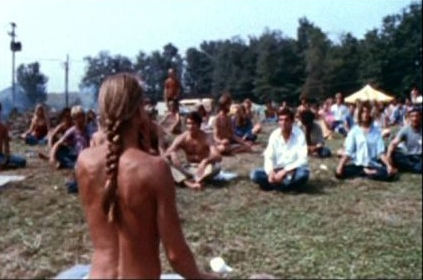
Also, commonly left out of accounts of Woodstock, is the fact that another Indian Yogi, Swami Satchidananda, not only appeared at Woodstock, himself, but formally opened the whole event with this speech:
So, let all our actions, and all our arts, express Yoga. Through that sacred art of music, let us find peace that will pervade all over the globe. Often we hear groups of people shouting, Fight for Peace. I still don’t understand how they are going to fight and then find peace. Therefore, let us not fight for peace, but let us find peace within ourselves first… the East has come into the West… But the entire success is in your hands, not in the hands of a few organizers. Naturally, they have come forward to do some job. I have met them. I admire them. But still, in your hands, the success lies.

In Summary—
The need for expression is what defined Woodstock as a postmodern event and historical marking point. Yes, there were other concerts before and after Woodstock, for another example, The Atlanta International Pop Festival, and The Isle of Wight (both in 1970), but none that carried the weight of meaning and message that Woodstock did. As quoted in the NY Times:
An estimated 600,000 people showed up at both the Isle of Wight Festival in 1970 and at the one-day Summer Jam at Watkins Glen, N.Y., in 1973. But those were merely concerts, not cultural symbols.
Woodstock was different. Woodstock would prove something to the world. What it proved was that for at least one weekend, hippies meant what they said about peace and love.


